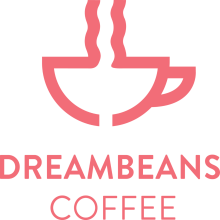The Speciality Coffee Association scoring system
The Speciality Coffee Association (SCA) scoring system is still fairly new, having made its debut in 1982. The purpose was to differentiate specialty coffee from commercial coffee and to create a means of evaluating coffee quality. The system was created with the intention of making cupping more consistent and reliable. It was also intended to make it easier to communicate about coffee, especially with regard to buying and selling.
While the system is well-known and broadly used, it is still worth explaining why it was created.

Coffee is scored during cupping, which is the act of preparing and evaluating brewed samples called “cupping”, using a special brewing process.
Coffee (the drink, not the beans) has almost 450 flavor compounds. Professionals taste coffee with a “tongue map” in their minds, they don’t use the taste buds on their tongue. The tip of the tongue tastes sweet and salty, the sides taste bitter and sour and the back taste umami.
The Specialty Coffee Association (SCA) cupping protocol is widely recognised as the gold standard for objectively evaluating coffee quality. At its core, the process usually involves making six cups of the same coffee side by side to ensure consistency and reduce the chance that an outlier cup will skew the results. Each cup is carefully measured using a ratio of 7 grams of ground coffee to 125 grams of water, which is steeped for exactly four minutes at a controlled temperature—usually around 93°C (200°F). Once the coffee has steeped, tasters begin by “breaking the crust,” gently stirring the top layer of grounds to release the coffee’s aroma. This step allows cuppers to note the coffee’s aroma before proceeding to skim off the remaining grounds.
A crucial detail in the SCA method is that every cup uses the same water-to-coffee ratio, meaning the extraction will be primarily influenced by how fine or coarse the coffee is ground. Coffee particles that are too fine can lead to over-extraction (resulting in bitterness), while grounds that are too coarse can cause under-extraction (leading to a flat or sour taste). To mitigate this, cuppers often adjust grind size for each sample to focus in on the optimal extraction level. Achieving consistent extraction in every cup is vital because it allows judges to fairly compare the qualities of the coffee, such as sweetness, acidity, body, and aftertaste, without the process itself skewing the results.
Throughout the tasting, cuppers use specific sensory and taste vocabulary—often referencing the SCA flavor wheel—to describe each cup. They’ll systematically assess aroma (both dry grounds and wet), flavor, aftertaste, acidity, body, sweetness, balance, uniformity, and cleanliness. The final goal is not just to identify one “best” coffee, but to characterise each coffee’s unique profile. By using standardised quantities, timings, temperatures, and scoring criteria, the SCA cupping method ensures that coffees can be accurately judged against one another, allowing roasters and buyers around the world to speak the same language when evaluating quality.


The SCA Evaluation Points
Aroma: scale of 0.25 with a maximum of 10 points.
Taste: scale of 0.25 with a maximum of 10 points.
Aftertaste: scale of 0.25 with a maximum of 10 points.
Acidity: scale of 0.25 with a maximum of 10 points.
Body: scale of 0.25 with a maximum of 10 points.
Balance: scale of 0.25 with a maximum of 10 points.
Cleaning: 2-point scale with a maximum of 10 points.
Sweetness: 2-point scale with a maximum of 10 points.
Uniformity: 2-point score with a maximum score of 10 points.
General: scale of 0.25 with a maximum score of 10 points
Coffee defects are also evaluated. These can include fermentation, phenol, fungus, chemical taints, or other taints that decrease quality and cleanliness of the drink.
Defect intensities:
-
Minus 2 points for a defect that lowers quality and cleanliness.
-
Minus 4 points to a strong defect – one that seriously damages the quality and cleanliness of the cup.
SCA coffee scoring system is used in competitions
The SCA system isn’t used just for cupping, the SCA’s scoring system is also used during competition, where it’s employed as a means of evaluating different coffees on an objective scale, regardless of what their subjective qualities are. Obviously, this makes it easier for judges to come to a consensus about which coffees tasted the best, and therefore should be awarded points.
It’s important to remember, however, that there is no perfect coffee scorecard. Each scoring chart is designed with a specific purpose in mind and is best suited for certain situations. For example, the SCA scoring chart is ideal for evaluating crops and comparing similar crops against each other, but it’s not as well-suited for roasting and brewing purposes.

The SCA Coffee Flavour Wheel is a great resource.

Members of SCAE and SCA since 2004.
Greenbean Coffee Roasters has been a member of the SCA since 2004. There used to be separate Speciality Coffee Associations of America (SCAA) and of Europe (SCAE) but they amalgamated in 2017.
The Speciality Coffee Association (SCA) is the largest coffee trade association in the world. It has a global membership of individuals and companies involved in the speciality coffee industry, including roasters and retailers. It aims to promote excellence in coffee and improve sustainability through education, research, training and science.
The SCA is based in the US but has offices around the world. It operates the Coffee Quality Institute, which provides training and educational resources for professionals across the supply chain, from farmer to barista, as well as offering certification programmes for all stages of coffee production, preparation and serving.
By Pat McArdle

